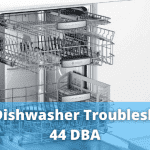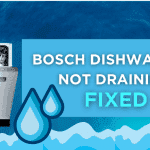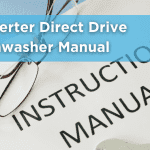Table of Contents
Dishwasher installations often suffer from common yet overlooked defects. One of the main culprits? The dishwasher drain hose. However, understanding the problems and their solutions is straightforward. Let’s delve into the common plumbing defects related to the dishwasher drain.
An improperly installed dishwasher drain hose is the most common defect we find with dishwasher installations, but it’s also one of the easiest things to get right.
There are two problems with the dishwasher drain among the plumbing issues shown.
Can you see what’s wrong with them?
Dishwasher Drains: Common Issues
Wrong Side of the Trap:
The first issue is that the dishwasher drain needs to be connected in the right place. It should be secured before a special part called the “P-trap.” The P-trap holds water at the bottom, and this water stops stinky sewer smells from getting inside the house. But in this picture, they connected the dishwasher drain after the P-trap, which is wrong. This mistake could let bad smells come back into the dishwasher. The image on the right side below shows how to do it.
The picture on the right below illustrates the correct way to install it.
Correct side of trap:
No High Loop:
The picture above shows that the dishwasher drain makes a high loop under the kitchen sink. This loop is the least you should do when setting up a dishwasher drain. Every dishwasher maker and a rule called “Section P2717.2 of the International Residential Code” says you must do it. But in Minnesota, we have different laws. I’ll explain that in a bit. First, here’s a picture to show you what a high loop looks like.
Look at this: the dishwasher hose is attached as high as it can be under the counter. And a picture from the dishwasher maker shows the same thing.
Even though new dishwashers already have a looped drain on the side when they’re made, every instruction manual still says you have to put this high loop under the sink.
About ten years ago, I emailed eight dishwasher manufacturers because I wanted to know why they always tell us to put a high loop under the sink when installing their dishwashers. I asked them this question:
“Why do you say we need a high loop in the dishwasher drain in your installation instructions? Doesn’t the loop already built into the side of the dishwasher do the same thing? I’d really appreciate any insight you can give on this.”
Here’s what they told me:
- Kenmore said it’s to prevent dirty water from returning to the dishwasher. Local plumbing rules often decide what’s needed in your area.
- GE explained that if you don’t need an air gap, the high loop in the drain hose is necessary to stop water from flowing the wrong way.
- Bosch mentioned that the high loop keeps water from staying in the hose, which could lead to bad smells and other issues.
- Viking found that the extra high loop helps with proper drainage and stops water from piling up in the wrong places.
- Maytag and Whirlpool didn’t respond, and neither did Amana.
So, in simple terms, the high loop is needed to prevent dirty water from going back into the dishwasher and ensure water drains properly. Even though dishwashers already have a loop built into them, that’s not enough – you still need the high loop under your kitchen sink. In Minneapolis, not having this can cause problems during home inspections. But you can fix it with a screwdriver, a screw, and a 3/4″ EMT clamp from a home improvement store.
The video at the start of this post demonstrates how to quickly fix this issue, which only takes about 10 seconds.
Now, regarding air gaps:
Instead of using a high loop under the kitchen sink, dishwasher makers also permit an “air gap.” This is a not-so-pretty contraption installed on top of the kitchen sink, and it looks like this:
Since the beginning of 2016, Minnesota has made it mandatory to use dishwasher air gaps, but people prefer them. I wrote about them back in 2017, and here’s what I said then: We don’t recommend putting in dishwasher air gaps during our home inspections. Even though the plumbing code says they’re needed for new installations, we’re not code inspectors. We advise on things that make sense to us, and these air gaps don’t.
The good news is that these air gaps will no longer be necessary in Minnesota. Our current plumbing code says you need an air gap in sections 414.3 and 807.4. But things will change in the next version of the plumbing code, set to be adopted on December 17, 2021. Section 414.3 will point you to follow section 807.3, which will say this:
I’ve highlighted the crucial part that’s getting better. Hooray! Homeowners, plumbers, builders, designers, and even building officials should be pleased with this change. Well, almost everyone will be happy, except for the folks who make air gaps. Sorry, guys, but your time in the spotlight is fading.
FAQs
Q: What’s the main function of the high loop?
A: It prevents water from flowing back into the dishwasher and ensures proper drainage.
Q: Are air gaps mandatory for all dishwasher installations?
A: It varies based on local regulations. In Minnesota, for instance, their requirement is set to be phased out by the end of 2021.
Q: How can I know if my dishwasher drain is properly installed?
A: Check for a high loop under your kitchen sink or an air gap on the sink. If neither is present, consider an adjustment.














[…] air gaps is the most efficient approach to keep your drain from cross-contaminating your dishwasher with waste. You’ll need an air gap if you want to […]
The copper water line in the wall extends to far out not allowing a proper fit for the new dishwasher
Thanks for commenting on our blog. Our team will email soon regarding this issue. Thanks